Coordinate Plane
A coordinate plane, also known as a Cartesian plane, is a two-dimensional plane formed by two number lines, called the x-axis and y-axis, that intersect at a right angle at their zero points. The x-axis is the horizontal line, and the y-axis is the vertical line. The point where the axes intersect is called the origin and is denoted as (0, 0).
Parts of the Coordinate Plane:
- Origin: The point of intersection of the x-axis and y-axis, denoted as (0, 0).
- X-axis: The horizontal line on the coordinate plane.
- Y-axis: The vertical line on the coordinate plane.
- Quadrants: The coordinate plane is divided into four quadrants labeled as I, II, III, and IV, moving counterclockwise from the top right quadrant.
Coordinates:
Coordinates are used to locate points on the coordinate plane. The x-coordinate represents the horizontal position of a point, and the y-coordinate represents the vertical position of a point. Coordinates are written in the form (x, y).
Study Guide:
- What are the two number lines that form a coordinate plane?
- What is the point of intersection of the x-axis and y-axis called?
- How many quadrants are there in a coordinate plane?
- What does the x-coordinate represent?
- What does the y-coordinate represent?
◂Math Worksheets and Study Guides Fifth Grade. Ratio
Study Guide Ratio
Ratio  Activity Lesson
Activity Lesson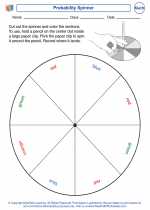 Probability Spinner
Probability Spinner  Activity Lesson
Activity Lesson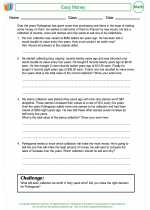 Easy Money
Easy Money  Worksheet/Answer key
Worksheet/Answer key Ratio
Ratio  Worksheet/Answer key
Worksheet/Answer key Ratio
Ratio  Worksheet/Answer key
Worksheet/Answer key Ratio
Ratio  Worksheet/Answer key
Worksheet/Answer key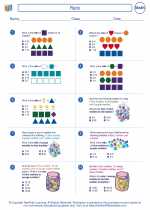 Ratio
Ratio  Worksheet/Answer key
Worksheet/Answer key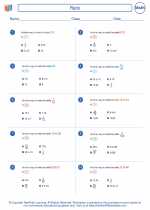 Ratio
Ratio  Worksheet/Answer key
Worksheet/Answer key Ratio
Ratio  Worksheet/Answer key
Worksheet/Answer key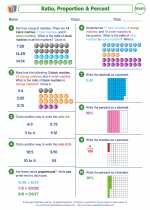 Ratio, Proportions and Percent
Ratio, Proportions and Percent  Worksheet/Answer key
Worksheet/Answer key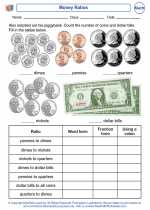 Money Ratios
Money Ratios  Worksheet/Answer key
Worksheet/Answer key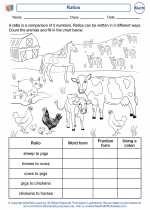 Animal Ratios
Animal Ratios  Vocabulary/Answer key
Vocabulary/Answer key Ratio
Ratio 

 Activity Lesson
Activity Lesson
 Activity Lesson
Activity Lesson
 Worksheet/Answer key
Worksheet/Answer key
 Worksheet/Answer key
Worksheet/Answer key
 Worksheet/Answer key
Worksheet/Answer key
 Worksheet/Answer key
Worksheet/Answer key
 Worksheet/Answer key
Worksheet/Answer key
 Worksheet/Answer key
Worksheet/Answer key
 Worksheet/Answer key
Worksheet/Answer key
 Worksheet/Answer key
Worksheet/Answer key
 Worksheet/Answer key
Worksheet/Answer key
 Vocabulary/Answer key
Vocabulary/Answer key

The resources above cover the following skills:
Algebra (NCTM)
Use mathematical models to represent and understand quantitative relationships.
Model problem situations with objects and use representations such as graphs, tables, and equations to draw conclusions.